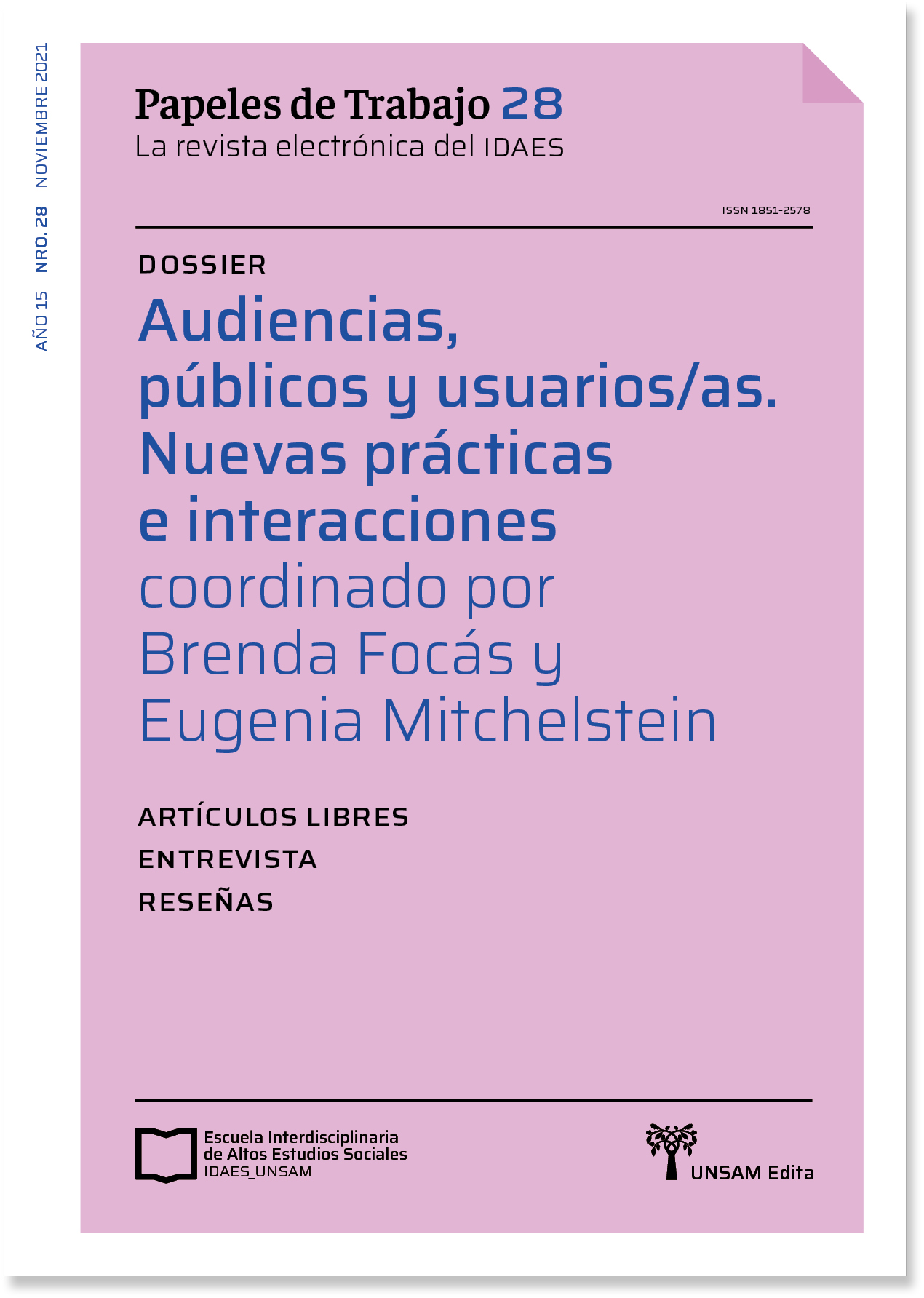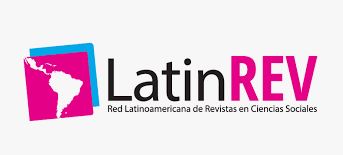Cuando en tu andar veo mi andar
Trayectos, trayectorias y organizadores del andar de músicos y músicas del circuito de rock de la ciudad de La Plata
Keywords:
Circuit, Rock of La Plata city, Trajectories, Paths, Walk organizersAbstract
In an investigation carried out in the 2013-2018 period we analyze the configuration of the circuit of rock in La Plata city. There, we observe that it’s a dynamic and active process that involves the participation of different actors (musicians, journalists, cultural managers, state agents) that in certain circumstances work collaboratively (Becker, 2008) and in others specific moments trigger disputes and tensions around dimensions such as tradition, the city and state policy, allowing us to see the implementation of operations of distinction, alteration, recognition and legitimization.
Taking up the results of this research, we will dedicate here to present the itineraries of a group of musicians who are members of the circuit, focusing on their trajectories (Elder, 2001), on the paths (Magnani 2002, 2014) that they carry out in the urban space and in the logics that operate organizing their gait. We hypothesize that it’s the trajectories of the actors that modulate the paths they make, as well as those spatial paths that have a performative character about their biographies, enabling new experiences.
About the methodology, we rely on a qualitative methodological strategy, using various data production tools such as interviews, participant observation, cartography and shading (Jirón, 2012)
References
Artigas, Celina. (2010). La Plata, ciudad inventada. La Plata, Primer párrafo.
Becker, Howard. (2008). Los mundos del arte. Sociología del trabajo artístico. Buenos Aires, Universidad Nacional de Quilmes.
Becker, Howard. (2014). Manual de escritura para científicos sociales. Cómo empezar y terminar una tesis, un libro o un artículo. Buenos Aires, Siglo XXI.
Elder, Glen. (2001). “Life course: sociological aspects”, en Smelser, Neil y Baltes, Paul (Eds.): International Encyclopedia of the Social and Behavioral Sciences. Oxford, Elsevier.
Gorbán, Débora. (2014). Las tramas del cartón. Trabajo y familia en los sectores populares del Gran Buenos Aires. Buenos Aires, Gorla.
Gorelik, Adrián. (2008). “La aldea en la ciudad”, Revista del museo de antropología, N° 1, pp. 73-96.
Jirón, Paola. (2012). “Transformándome en la sombra”, Bifurcaciones, N° 10, s/p.
Magnani, José Luis. (2002). “De perto e de dentro: notas para uma etnografia urbana”, Revista Brasileira de Ciencias Sociales, Vol. 17, N° 49, pp. 11-29.
Magnani, José Luis. (2014). “Circuito: propuesta de delimitación de la categoría”, Ponto Urbe, Vol. 15, pp. 1-14.
Ruiz, Franco. y Doeswijk, Maite. (2007). El rock platense de los años noventa. Tesis para optar por el grado de Licenciados en Comunicación Social. Facultad de Periodismo y Comunicación Social. UNLP.
Segura, Ramiro y Chaves, Mariana. (2015). “Introducción: una antropología de prácticas juveniles en la ciudad”, en Chaves, Mariana y Segura, Ramiro (Eds.): Hacerse un lugar. Circuitos y trayectorias juveniles en ámbitos urbanos. Buenos Aires, Biblos. Pp 11-22.
Vicentini, Leila. (2010). “Cultura, rock y jóvenes”, en Gutiérrez, Edgardo (Ed.): Rock del país: estudios culturales de rock en Argentina. Jujuy, Editorial de la Universidad Nacional de Jujuy. Pp. 8-22.
Zabiuk, Mariel. (2009). “Territorios del rock. Jóvenes universitarios y cambios culturales, 1960-1970.” Los trabajos y los días. Revista de la cátedra de historia socioeconómica de América Latina y Argentina, N° 1, pp. 69-87.









